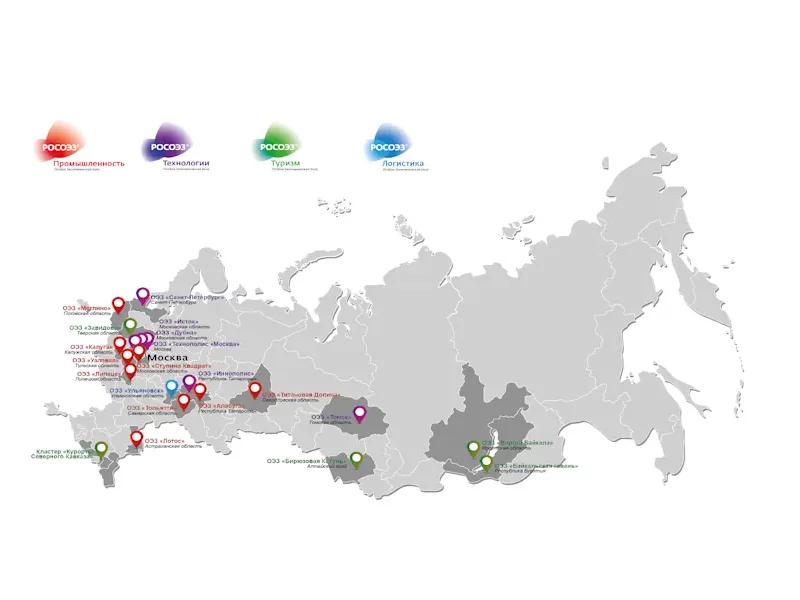The legislation of the Russian Federation does not clearly define what non-core assets are. But at the same time, all enterprises distinguish between the concepts of core and non-core assets. There are also a number of methodological recommendations for their classification, scientific research and practice results. Then about what non-core assets are, how they can be managed to achieve the desired effect.
Non-core assets: what do they include?

Non–core assets (NA) are assets of an enterprise that legally belong to it and do not participate in the company’s main activity.
The main difference is as follows:
- Profile assets are property and other values that the company uses in production and other fields of activity. They are directly involved in the work of the company, ensuring its work.
- Non—core assets – property that is not used directly in the implementation of the main activities of the company.
It turns out that in order to make a profit and maintain the normal operation of the organization, the presence of such assets is not necessary.
For example, on the balance sheet of the company there is a production workshop, a warehouse and a recreation center for the children of employees. Thus, the first two names refer to core assets, the last name is a kind of non–core assets.
It is believed that the presence of non-core property has nothing to do with the development strategy of the organization. The company is free to sell such valuables. This will not have any global consequences for economic activity.
Features of such NP (based on the Order of the Federal Property Management Agency No. 526 dated December 30, 2014):
- They may not be used at all in the life of the organization.
- They can be used for other purposes. A building, structure, and other valuables may be intended for one purpose, but will be used for a completely different purpose.
- Their presence contradicts and does not correspond to the mission of the business entity, the goals and objectives of functioning.
- Their number exceeds the existing standards and norms for certain types of companies.
But, in general, it is a mistake to believe that non-core assets do not have any impact on the company’s performance at all. Of course, they do not participate in the creation of products or services. But they allow the company to work multi-vector. For example, motivating staff, reducing investment injections, developing additional areas of work.
Experts recommend using a simple rule: if the company continues to operate normally during the sale or liquidation of this asset, and maybe better, then such an asset may be recognized as non-core. If the absence of such value leads to changes in the results of work, then the asset is a profile.
Management of non-core assets

Non–core assets are a difficult area of work. And, unfortunately, most companies work with them according to simple regulations: either they do not notice their presence, using the old schemes, or they just mindlessly sell them for a minimum cost. However, both of these options may be errors and the task of the manager is to solve the problem correctly.
The management of non-core assets in an enterprise may have the following strategies:
- Sale on the market. The best and most effective option for a company that does not use such property at all. It is important that there should be demand for such a product in the market. Otherwise, the transaction may be meaningless and it is better to hold a building or other social object until better times than to sell it cheap.
- Provision of the object for rent. It is also an effective option, especially in cases when the implementation or liquidation of an object for an enterprise will be expensive. If there are additional costs when selling, it is better to refuse this method. For example, renting out a part of a building or structure can perfectly replenish the revenue side of the budget.
- Use of an asset as a share in the authorized capital of other companies. Often a company has such property that it is impossible to sell, or it does not make sense, and no one can manage it effectively. In the absence of a competent specialist who can develop a strategy for using NP, it is better to use it as a strategic asset.
- Liquidation of the object. This method is used in the absence of potential market demand. It makes no sense to maintain a building or structure without some purpose and efficiency. It is easier to disassemble it, dispose of it, having received recyclable materials.
- Change of purpose. With proper management or business expansion, a company can use a non-core asset in its core business. The practice of many commercial organizations shows that this option can be very successful. For example, to use the building as a repair shop, or to modernize the object in order to operate it for administrative purposes.
- “Conservation”. The latest control option. It is used when it is impossible to use all other methods. For example, the costs of liquidation are so high that it is easier to preserve the object until better times.
In practice, non–core assets are a critical management point for many top managers. There are a number of key problems and consequences that companies do not take into account when forming a strategic management plan.
What problems existing at the enterprise can create difficulties in the context of managing non-core assets:
- The company does not have a unified management strategy or there is a strategy, but the management staff is not fully aware of its tasks and goals. In such a situation, non-core assets are listed on the balance sheet just like that. The just hope that they will come in handy sometime. This entails additional maintenance costs and a lack of understanding of the effectiveness of their use.
- The Company does not have a specialist who is competent in asset management in general. There is also no strategy for managing such values. The company has everything on its balance sheet-what it has. Without thinking about what could be different. This generally leads to the fact that no one manages the NP. The object is on balance just like that. No one calculates whether it is effective to maintain it or not.
- There is no single methodology in the organization that allows you to assess all the risks of work. This leads to the fact that no one calculates what such thoughtless use of existing assets entails. Scenarios are not developed, plans and results are not thought out. The result is that the assessment of NP is not carried out at all or is carried out taking into account many violations.
- There is no internal control system over the management process, including the NP. It turns out that no one evaluates the efficiency of the use and management of non-core assets. Thoughtless administration options may be developed that do not have any backed-up calculations.
Of course, any problem is solved depending on the specifics of the company, the qualifications of the management staff, and the scope of activities. It cannot be said that one management strategy will suit all companies equally.
Below is a list of those basic solutions that, in their different combinations, will solve the problem:
- Involve external experts specializing in such issues in the management. It is not necessary to use the work of consultants all the time. A few consultations are enough to develop a basic strategy.
- Develop common requirements and criteria for risk assessment, including management, use of NA. For these purposes, it is also worth attracting a consultant.
- Work out possible use cases for various objects. It is important to economically justify the effectiveness of the implementation of any scenario. You do not need to rely only on the opinion or desire of the administration. All decisions must be reasoned. It is possible, which is optimal, to form a financial model to assess the effectiveness of the use of NA.
All the solutions presented are only part of the possible management methods. And for one company it is often really easier to sell than to attract experts and external consultants.
Who, in practice, is engaged in the management of non-core assets at the enterprise itself? This is not one person, but a whole team. This is the head of the company, the chief accountant, and the head of the financial and economic department. Both an analyst and an IT service employee are involved in forecasting and developing the model. It all depends on the task at hand.
Non—core assets – how is the sale realized?

The most popular method of managing non–core assets is their sale. Often, when an object does not bring income, but only entails additional costs, it is sold on the market.
The sale of assets involves obtaining the following advantages:
- Efficiency of income generation. Suitable for companies that need working capital. They can be directed to business expansion, debt repayment, technology modernization, etc.
- Reduction of the tax base and additional expenses. By getting rid of additional property, the organization reduces the tax base for paying property tax.
Before implementing an object of such purpose, it is necessary to develop a whole algorithm of actions: how and in what sequence the transaction will take place.
Approximate algorithm of actions:
- Formation of a list of those assets that can be sold on the market or transferred to trust management. In parallel, the evaluation of such objects is carried out. The list of those that are recognized as unprofitable for the enterprise is determined.
- Preparation for sale. This action includes several procedures:
- Evaluation procedures. The current and estimated cost is determined. A set of measures is being developed that allows to increase the market value of a building, structure, etc.
- Search for potential buyers who are interested in offers. Conducting negotiations, tenders, auctions and other procedures regulated by the transaction.
- Preparation of the necessary set of documents.
- Signing the deal. Direct sale of the object.
As a rule, large enterprises that own such property have administrative documents on the organization of the sale of non-core assets. For example, the Procedure or Program for organizing the sale of non-core assets. This document clearly spelled out the rules of procedure.
Another question: transactions on the sale of non-core assets are often carried out by an agent. This is a specialist who provides comprehensive services for the preparation and sale of such valuables. Some organizations may involve an agent on a voluntary basis. For example, they found a company, chose a specialist and that’s it. The agent can be selected on a competitive basis. The commission to the specialist can be paid by both the seller and the buyer.
The general procedure for the sale is regulated by Methodological Guidelines for the Identification and disposal of non-core assets. Based on these regulations, it is recommended to sell non-core assets through open auctions.
It can be:
- Auction. Everything is simple here: the buyer becomes the subject who will be able to offer the maximum price.
- Competition. The winner is not always the one who offers the maximum price. The main thing is to offer the best conditions. And here a very important task is to draw up a competent contract of sale. On its basis, the seller or the buyer may be obliged to certain obligations.
- Public offer. Here everything is inversely proportional to the auction. There is a base price, and then with each step the price decreases.
The procedure can be carried out through electronic trading platforms, which is very popular now. There are several marketplaces where a list of such properties is presented. Such information is also posted on official websites.
What documents are required (for example, an auction in accordance with 44-FZ):
- Notification of the auction (requirements for participants, methods of providing tender documentation, payment for the provision of tender documentation, date /place /time of opening envelopes, etc.).
- Tender documentation (description of the auction item, requirements for the bid of the auction participant, evaluation criteria, amount of collateral, draft contract, etc.)
Purchase of non-core assets

Non–core assets can be a ballast for one enterprise, a real necessity for another. And it is not necessary that the purchased object will be used in accordance with the technical characteristics.
What to do if a company wants to acquire non-core assets:
- Launch a search for the non-core asset that is needed. There are a lot of trading platforms on the Internet, in which everyone can take part. You can buy an object both for a legal entity and for personal purposes. On such sites, a register of non-core assets is presented. For example, one of the most famous is Portal DA.
- Register on the electronic platform. Registration documents may be required for a legal entity. At the time of registration, to create a business account, you need the following data:
-
- company name and its TIN;
- legal address.
You can often register through a bank ID. The platform carefully checks the organization so that it is real.
After registration, the user has access to a complete list of objects for sale. User looks at the options, submits applications for the proposals they like. The application form and the further algorithm of participation depends on the form in which the sale will be organized: auction, competition.
You can buy non-core assets of banks and other companies either directly from the owner himself or through an agent. If the buyer’s bid wins, then the company’s representative contacts the potential buyer and details of the transaction are discussed.
As for individuals. The easiest way to buy is to go to the official website of the bank and find the options for collateral that it sells on the market. They often offer mortgaged real estate and cars.
Advantages of such a purchase:
- Lower cost;
- The purchase can be made on credit;
- The transaction has already been verified for legal purity and therefore is accompanied by minimal risks.
It is enough for a Russian citizen to familiarize themselves with the proposals and contact the bank for further advice.
Examples of buying/selling non-core assets

There are many offers on the market. You can find offers for the sale of non-core assets of state corporations, commercial enterprises. But the largest share in this niche falls precisely on non-core assets that are sold by banks.
This situation is explained by the fact that banks issue loans to individuals and legal entities secured by real estate and other assets. As soon as such a loan becomes problematic, the bank has the opportunity to confiscate the collateral in court.
The sale of non-core assets of banks is in demand among many large banks in Russia, but further top 3:
- In recent years, they have been at the forefront in the formation of the NA portfolio. As of the end of 2017, the volume of Sberbank’s non-core assets amounted to 447 billion rubles. This is slightly less than 2% of the total assets of the bank.
- Non-core assets of this institution amount to 421 billion rubles at the end of 2018, which as a percentage is slightly more than 4% of the total assets of the company.
- Growth Bank. The volume of non-core assets is 338 billion rubles. And what is noteworthy, this is about 70% of the total assets of the bank.
Practice shows that over time, the volume of non-core assets of the bank may decrease or increase. In many ways it depends on the economic situation.
For example, the growth of NA is observed at a time of crisis, when people and companies do not have money to pay for loans. Then the collateral becomes the object of confiscation.
One of the most striking examples of the sale of non-core assets was in 2010, when the management of Sberbank announced the sale of all non-core assets. Then the bank was going through a challenging time.In order to balance at the moment of crisis, they decided to implement everything they had. These were the development companies “Capital Group” and “Don-stroy”, and the trading network “Mosmart”, “Wester”, etc. It is not known for sure what part they sold, but the intentions were thorough.
As of July 2021 , the most expensive offers from Sberbank among the sale of non-core assets are the following:
- Electric grid company in Chelyabinsk. Estimated cost – 1.3 billion rubles. The object is sold in a single lot according to the auction system.
- A shopping and hotel complex located in Khabarovsk, in its central part. The estimated cost is 1.1 billion rubles.
- The legal successor of an agricultural company in the Leningrad region. At a cost of 531 million rubles.
There are, in fact, a lot of such proposals. All of them are presented in the electronic database of the bank and are sold through the Sberbank trading platform.
As for innovations. The central bank plans to limit the ability of banks to invest their money in non-core assets. After all, it’s not just about collateral. Parts of the company invest money in investment funds, subsidiaries. Not all initiatives become successful. And this carries additional risks for commercial banks.
It is not yet known how such innovations will work. However, they will affect only the backbone financial system banks. Small financial institutions will not be affected by this.
Thus, non–core assets are that part of the company’s property, the use of which does not have a significant impact on the main activities of the organization. Thus, if there is such an asset on the balance sheet, then the task of effective management is to find a worthy use for it. Otherwise, you need to sell it to minimize maintenance costs.
Разрабатываем Стратегии для собственников бизнеса в целях оптимизации группы компаний, решения нестандартных задач и продажи активов. Оказываем услуги по сопровождению сделок M&A, управлению непрофильными активами и проектами в целом.













